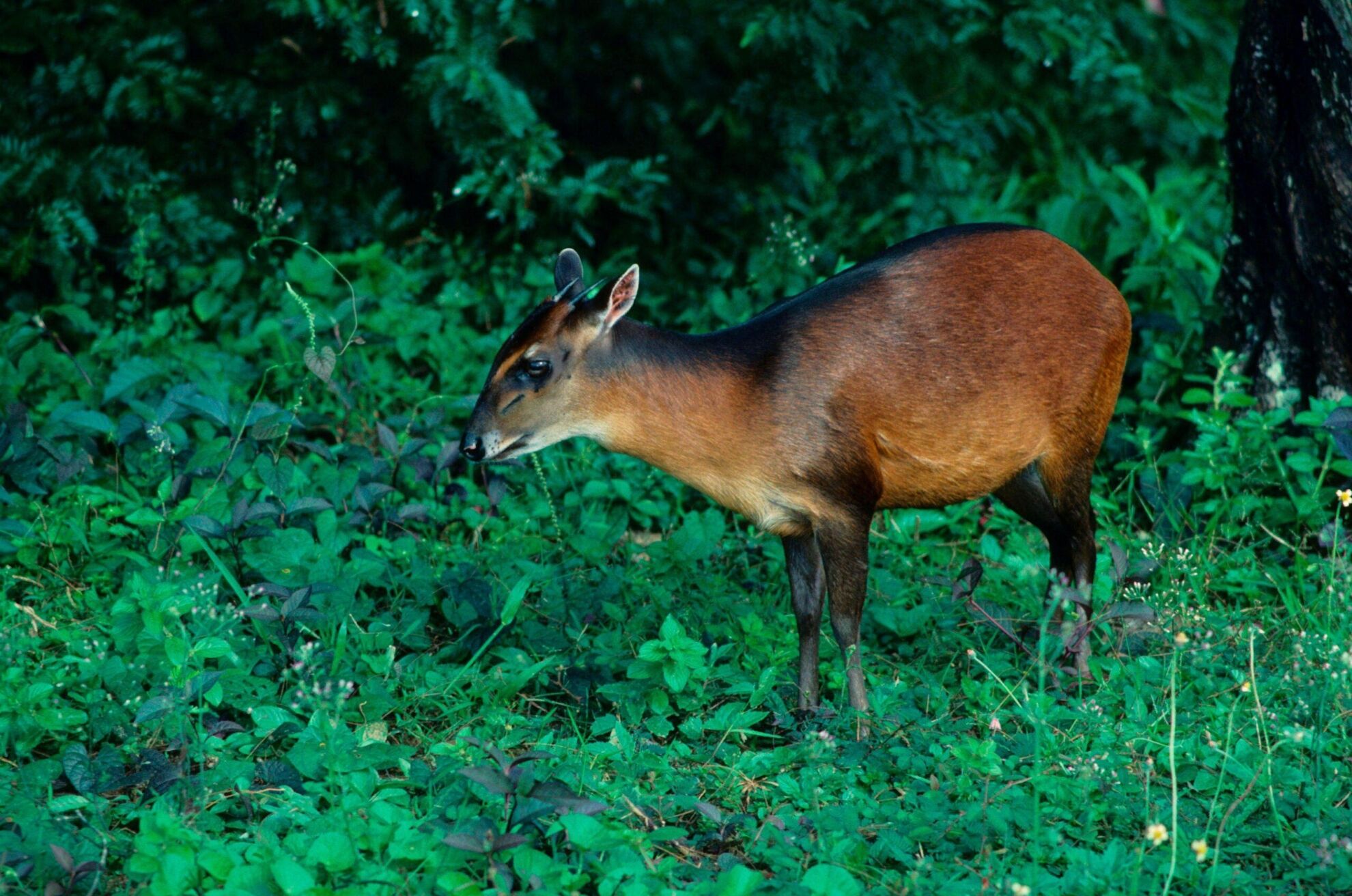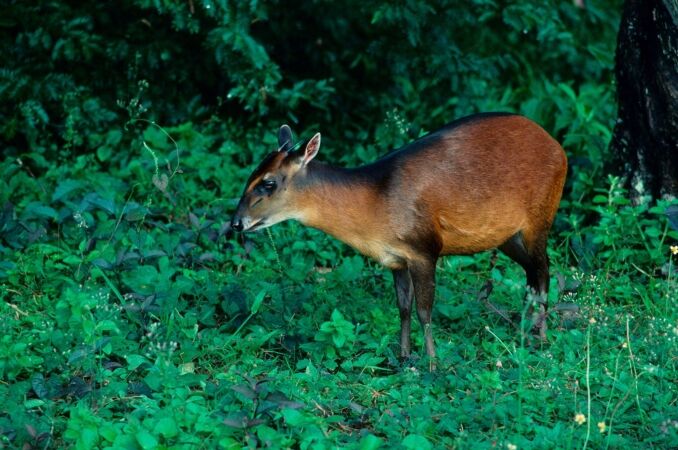

The Bay duiker (Cephalophus dorsalis), also known as the black-striped duiker or the black-backed duiker, is a forest-dwelling duiker that is native to western and central Africa. This medium-sized duiker provides a great challenge on an African hunt, being elusive, shy, and difficult to spot, preferring forest-type habitats and vegetation.
There are two sub-species of the Bay duiker, namely the C.d. dorsalis in West Africa, inhabiting the region from Guinea-Bissau to Togo, and the C.d. castaneus that is found in Nigeria, east of the Niger River, through Central Africa, and south to northern Angola region.
The Bay duiker is omnivorous, feasting on many varieties of fruits in season. They do, however, also consume insects and small invertebrates, with reports of them also consuming birds (without wings or feet) and scavenging carrion. They stalk live prey and use their front hooves to immobilize them, proving to be adept and quick hunters.
This species of duiker is nocturnal and spends its days hiding amongst tree roots and hollowed trees. They are mainly solitary animals, with males being territorial while females have overlapping territories. While breeding may happen throughout the year, it is said that there may be peaks during times of abundant food and fruits. A gestation period of 238 days sees one single fawn born, weighing approximately 3,5 pounds.
Predators of the bay duiker include mandrills and leopards.
This species of duiker is listed as “near threatened” by the International Union for the Conservation of Nature (IUCN).
Name:
Cephalophus dorsalis
Male Weight:
40-51 pounds
Male Shoulder Height:
17-19 inches
Range:
West and Central Africa
Life span:
17-18 years (captivity)
Bay duikers are known for their nocturnal habits and their ability to move silently through dense forests
The Bay duiker is a medium-sized antelope, weighing between 40 and 51 pounds, with the females weighing slightly more than their male counterparts. Their coats are a bright reddish-brown, with dark legs. The most intriguing physical attribute of this duiker is the solid black stripe that runs down its back, from its head to its tail. The duiker’s chin, throat, and lips are white, their tail is black above and white below, with the tip of its tail also white. Both sexes have horns that can reach between 2 to 3,1 inches, with the female’s horns being slightly narrower. In terms of differentiating between the western and eastern subspecies, the eastern Bay duiker is slightly larger and heavier than the western bay duiker, with their stripe also being wider and lighter in color.
Due to their size and wary nature, duikers are difficult to approach. The best method is the spot-and-stalk technique, used for most duiker species.
Duikers in general, are quite difficult to target, as they are very nervous antelopes that are quite adept at hiding at a moment’s notice. The Bay duiker is nocturnal, which then means the best time to hunt them would be late in the afternoon or early in the morning when they are either heading out to forage for food or when they are returning to their hiding place. This striking antelope will make a good game hunting trophy, with the unusual stripe down its back standing it apart from other duiker trophies.
When duiker hunting in Africa, it’s very likely going to be at a close range, with a fast-moving target. A .308 or a 30.06 loaded with solids are options to use when targeting the bay duiker. While hunters can also use a shot gun, avoid using high calibers.
Search from our range of Hunts across various popular destinations in Africa.
Find A Hunt